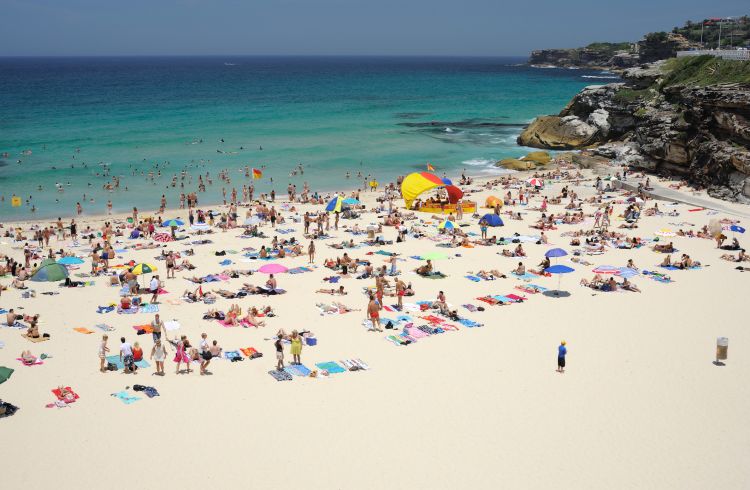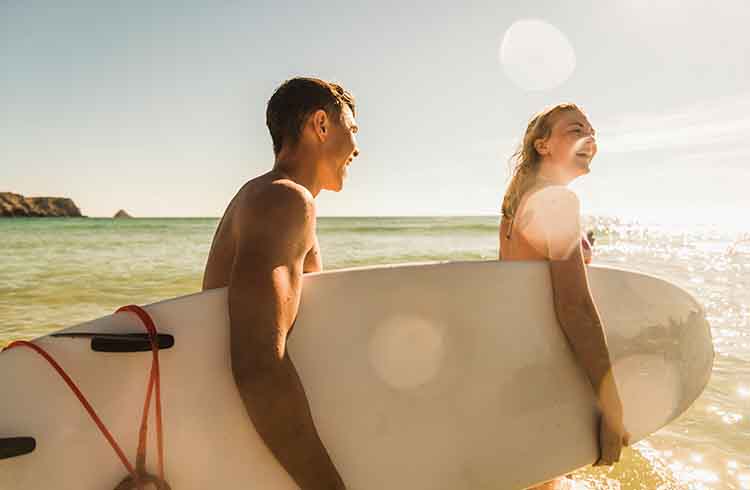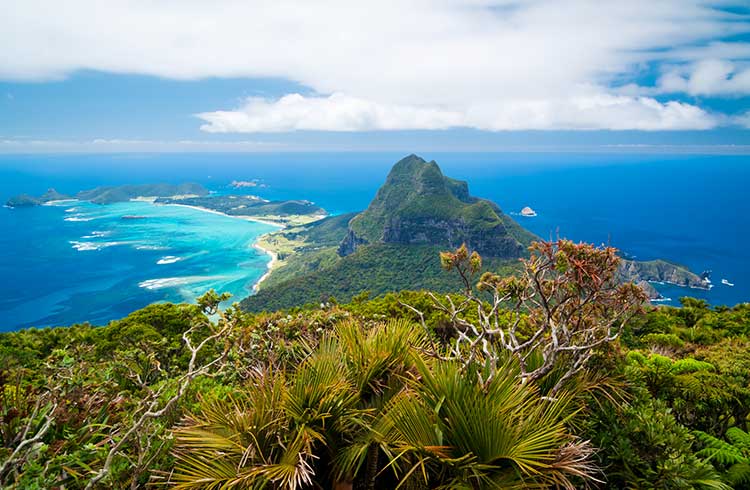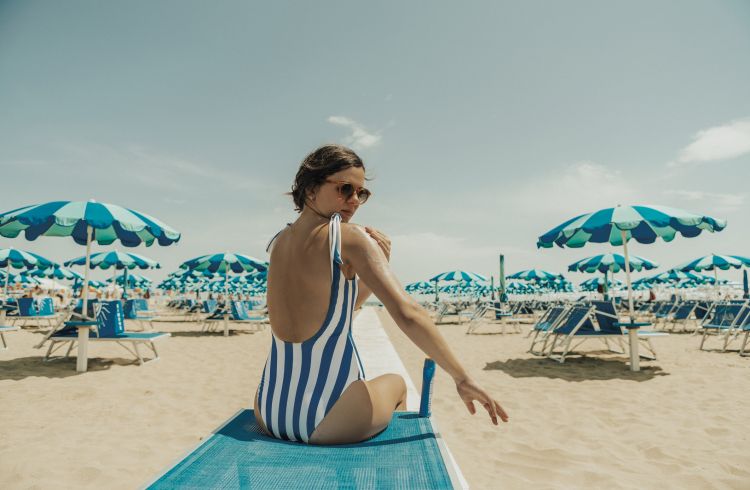Ocean Safety in Australia: What Travelers Need To Know
Is it safe to swim in Australia? Staying safe on the beaches is as easy as following some basic rules. Here are our tips for having fun in the ocean.
 Photo © Getty Images/Federico Stevanin/EyeEm
Photo © Getty Images/Federico Stevanin/EyeEm
Australia is known for its incredible coastline and spectacular, unspoiled beaches. And with 85% of Aussies living within 50km of the coast, locals love the beach as much as visitors. As with any beach activity, there is a level of risk, including strong currents, stingy things and sunburn, but with good planning and a sensible approach to water safety, you will have an amazing time on Australia's beaches.
- Where can I swim or surf in Australia?
- Rip currents
- Irukandji and box jellyfish
- Bluebottles
- What about sharks?
- Sun safety
Where can I swim or surf in Australia?
Where possible, always swim or surf at patrolled beaches. Traveling around Australia you will find that many beaches are not patrolled, with some being rugged, isolated parts of the coastline.
While many of these isolated spots are beautiful, if you were to get into trouble it could take longer for help to arrive. Some locations also have poor cell phone reception.
So always let someone know where you are going and when you will be back. Better still, head there with friends.
Don't swim alone, particularly if you are not a strong swimmer. Even if you are a strong swimmer, know your limitations – the surf can be very rough and conditions can change quickly.
Never dive into water, even if it looks deep enough. Sandbars can occur anywhere, and they're hard to spot. Lifeguards deal with almost as many spinal injuries as drownings.
When at patrolled beaches, the first thing to do is pay attention to any signage, particularly if the signs say the beach is closed. This is not because the lifeguards are on strike – it's because the water is considered too dangerous. This could be because of rip currents, shark sighting, jellyfish etc. Don't disobey any signage or instructions from lifeguards, they are there for your safety.
When lifeguards are on patrol, the safest place to swim is between the red and yellow flags. The flags are placed at either end of the areas of the ocean the lifeguards consider to be safe to swim in. These spots are also for swimmers only – if you are surfing don't do it between the flags (lifeguards may confiscate your board). Surfing spots at patrolled beaches are delineated by black and white checkered flags. Swimmers should avoid these areas unless you want to cop a board to the head.
In summer, particularly at popular beaches like Bondi and Manly in Sydney, it can get very crowded – on a busy day Bondi Beach can have more than 50,000 people on it!
Make it easier for lifeguards to keep so many people safe by following their directions. They will use whistles, sirens, loudspeaker announcements, hand signals and verbal directions to keep beach-goers safe.
You may notice that some lifeguards are dressed in blue, some in red and yellow or both (in the case of Bondi). The red and yellow lifeguards are the volunteer Surf Life Saving Association and the blue lifeguards are APOLA lifeguards who are hired by local councils. Don't worry, they are both professionals at what they do.
Rip currents
Many of Australia's beaches have rips – powerful currents that can drag a swimmer out to sea. Rips can behave in many different ways and are influenced by the beach morphology, swell, waves, and other factors.
Surf Life Saving Australia considers rips to be the number-one hazard on Australian beaches (yes, it's not sharks despite the media hype). Many people have died or come close to death by panicking or trying to swim against the rip trying to get back to shore (rips cause at least 21 drowning deaths in Australia each year).
If you find yourself caught in a rip, don't panic (easier said than done). A rip will flow against the waves back out to sea, so if you swim parallel to the beach into the breaking waves, after just a few meters you can often swim out of it.
You can also float and go with the rip, because it will often disperse just beyond the breakers, as long as you are a strong swimmer and can then get yourself back to shore.
If you are in trouble and need help from the lifesavers, raise one arm up in the air and wave.
Irukandji and box jellyfish
Stinging marine creatures, including Irukandji jellyfish and box jellyfish, are mainly found in the waters of northern Australia and as far south as the Whitsunday Islands in Queensland. Their numbers peak between November and May, but they are found all year around. Irukandjis are transparent and small, which makes them hard to see in the water. Their sting causes localized pain, disorientation, respiratory distress, and more. Box jellyfish are bigger than Irukandjis, and their sting is reportedly more painful, and causes noticeable wounds.
If you are stung by an Irukandji or a box jellyfish, immediate first aid is vital. Get the attention of any lifeguards on duty, and/or call Australia's main emergency number, 000. Rinse the area with vinegar. Carefully remove the tentacles with tweezers. Reassure the patient and keep them calm. Perform CPR if necessary until medical help arrives.
Throughout northern Australia, some beaches are closed during the peak period for these creatures from November to May, yet another good reason to read signs on beaches.
If you are at an unpatrolled beach and have been stung by anything you think may be lethal, dial 000 for emergency assistance. The operator will then guide you as to the best course of first aid or treatment.
Bluebottles
Non-lethal, but painful nonetheless, bluebottles are small, bright blue jellyfish which are quite easy to spot.
You will know if and when bluebottles are present at a beach as they are often washed up along the shoreline. Some people, especially children, find the sting painful, others say it causes a mild itch.
The best treatment is hot water (as hot as you can stand), or ice. Run the sting under the hot water until it comes out. Again, pick off any tentacles (not with your fingers!), but don't rub with sand, and don't use vinegar.
The pain goes away after 15 to 30 minutes, and the red welt will disappear in a few days.
What about sharks?
Globally each year, an average of 10 people are fatally bitten by a shark. Statistically, you are more likely to drown at a beach than be bitten by a shark. Between July 2022 and June 2023, 281 people drowned at beaches and coastal locations in Australia.
But there are things you can do to minimize the risk of a shark bite. Check out our article on being shark smart.
Sun safety
While an Australian summer will do wonders for your tan, many travelers underestimate the harshness of the Australian sun. Red, roasted Brits and Europeans on Australian beaches are a common sight, but this can be prevented. Always slip, slop, slap; slip on a shirt, slop on a water-resistant, broad-spectrum sunscreen (at least 30+) and slap on a hat. Don't forget your sunnies too.
Always reapply sunscreen after being in the water or if you have been sweating.
It’s essential to cover up and protect your skin from the UV rays during the hottest parts of the day (between 10am and 3pm). Seek shade where possible and always stay hydrated.
Sunburn is painful and can take days or weeks to go away depending on the severity. Melanoma (skin cancer) is a major issue in Australia with up to 17,700 cases diagnosed each year.
Related articles
Simple and flexible travel insurance
You can buy at home or while traveling, and claim online from anywhere in the world. With 150+ adventure activities covered and 24/7 emergency assistance.
Get a quote


6 Comments
Outstanding information, I thought Australia was not a place to swim safely and avoided any trip,but now may give it a whirl.
Thank you,
Your comments on how to deal with Irukanji, Box Jellyfish, and Blue Ringed Octopus is more effective for the NON Lethal stings. Some valuable information such as with the Blue Ringed Octopus, when the patient seems dead, it is more likely that they are just paralysed and that you have to keep CPR up until paramedics arrive is vital! You have made the Lethal stings seem as non urgent as the Non lethal stingers.
I went to Whitehaven February of three years ago and I'm today reading about the Irukandji for the first time. I can't believe I went into that water!
This is a very helpful guide for all those planning to enjoy Australia's beaches. For surfing, it is worth noting that choosing the right surf fins is also important in ensuring one's safety.
Knowing what to do in order to avoid surfing risks is probably one of the first steps you need to as a beginner surfer. Thankfully, there's no shortage of surfing tips on the Internet for you to learn from. However, one of the areas which I noticed most articles fail to mention is the importance of choosing the right surfing fin.
I am a casual open water swimmer from Canada that had previously found a site talking about a daily morning swim about 1 km distance (or more), informal where everyone swam to a sm island then back. I can’t find a reference to this anywhere anymore. It isn’t a race. I believe it was in Melbourne but can’t be sure. I also remember something about pink caps.
Faint hope request for any info please